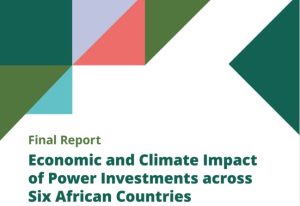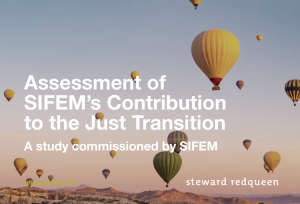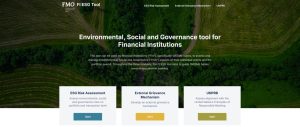How to write an impact report people actually want to read
Impact investors face a defining moment. As mainstream investors struggle to balance internal commitments against political headwinds, impact investors have both an opportunity and obligation to prove their worth. Your Impact Report is a great opportunity to do so.
The difference between reports that matter and those that don’t? Substance over spin. Drawing from our work with leading impact investors, we’ve identified three essentials: clear vision rooted in purpose, honest introspection about wins and setbacks, and meaningful commitments that balance ambition with action. Here’s how to get there.
1. Start with why (not what)
Before diving into metrics and case studies, reconnect with the urgent challenge that inspired your fund’s creation. What problem keeps you up at night? Why was your fund set up again in the first place?
And here’s the irony: giving real meaning to your work might mean using the word “impact” less, not more. The term has become such a catch-all that it risks meaning nothing. Instead, be specific. Energy access for off-grid communities? Circular economy models in manufacturing? Maternal health outcomes in underserved regions? The best reports ground vision in concrete terms that connect capital to tangible change. Let readers understand how you want the world to look different, and why that matters to you.
In practice, this means that you start with your foundational “why.” Reference the moment or insight behind your fund’s creation. And make it personal; authentic purpose resonates more than corporate mission statements.
2. Show your scars, not just your medals
Your report shouldn’t be a highlight reel. Impact investing is complex work filled with difficult trade-offs, unexpected setbacks, and evolving understanding. A credible report acknowledges this.
Discuss the portfolio company that didn’t achieve anticipated social outcomes despite strong financial returns. Explore the dilemma between supporting an existing investee versus deploying capital to a new opportunity. Admit when a theory of change didn’t play out as expected and explain what you learned from that. This transparency isn’t weakness; it’s evidence of sophisticated impact management. Investors and stakeholders see through purely positive narratives. What they respect is the ability to navigate complexity with clear eyes. And this kind of honesty and credibility will also encourage investees to be frank.
In practice, this means that you include a section on challenges and learnings. Discuss at least one situation that didn’t go as planned. Be specific about trade-offs you faced. Show how these experiences are shaping your strategy going forward.
3. Dream big, act now
Impact management is about continuous improvement. Your report should chart both where you’re heading and the concrete steps you’re taking to get there.
The most effective reports maintain a dual time horizon. They articulate ambitious long-term goals that guide strategic direction. But they also commit to specific, actionable steps for the coming year that prove progress is underway. This creates accountability and shows you’re establishing benchmarks against which your next report will be measured. Your long-term ambitions define direction; your short-term commitments prove you’re walking the path.
In practice, this means you should close with both strategic ambitions (3-5 years) and tactical commitments (next year). Be specific and create clear markers for the next report.
We recognise that reporting requires substantial work. When done right though, it becomes a valuable asset that sharpens your investment approach and strengthens stakeholder relationships. The alternative – producing a superficial document that fails to reflect the depth of your actual impact work – is a cost with no return.
Need support?
If you’d like guidance developing your impact reporting approach, translating complex impact data into compelling narratives, or establishing robust impact measurement frameworks, the Steward Redqueen team is here to help. Feel free to contact us (info@stewardredqueen.com) or me personally (willem.vosmer@stewardredqueen.com).
Good luck with your reports and we look forward to reading them.

















